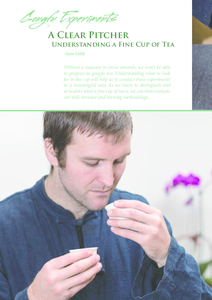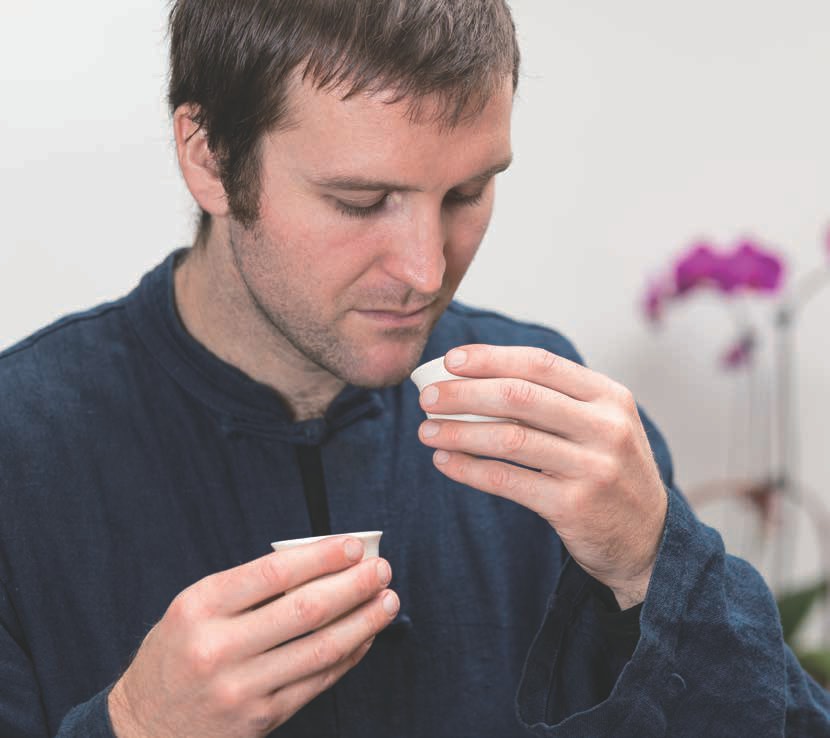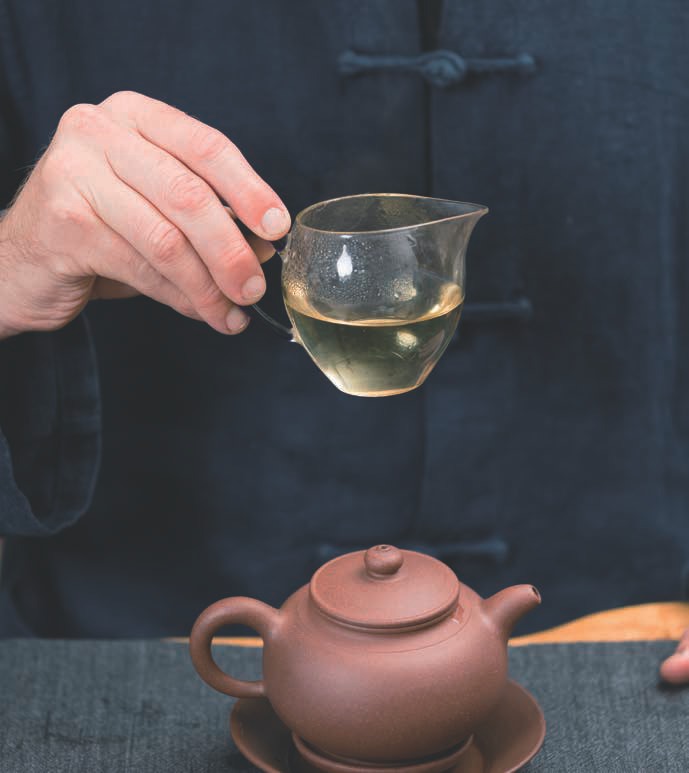
 |
|

Understanding the motivation to do these experiments every month may help some of you to try them with more verve. It certainly helped inspire me! Once we have considered and understand why we undertake gongfu experiments, we can then move onto the how. This month I'd like to explore the how and why of gongfu experimentation before beginning this month's experiment on what the effect of using a pitcher, or cha hai (茶海), has on tea brewing.
To understand why we experiment, we must understand a little bit about the origins of gongfu tea. It was developed in Southern China, mostly in Fujian and Guangdong, predominately by martial arts practitioners. These early pioneers of the art used it as a way to develop sensitivity, one-pointed focus and balance. Their lives were devoted to mastery, both inner and outer. Tea, like all art, does not leave room for middle ground. Our arrow either finds it mark or it does not. We pour a fine cup of tea, or we do not.
Nothing else matters. And so why practice? Why has this tradition stayed alive over the centuries? For me, refining and cultivating sensitivity and the ability to focus and stay sharp, as well as the grace and fluidity of gongfu tea have all helped teach me to live well, not to mention giving me an art to express the insights I cultivate with others. Gongfu tea has changed my life!
Motivated by a powerful why, we still need a how. How do you know you are getting better? How do we measure the arrow's proximity to the mark? When we shoot an arrow, the mark is obvious. The bullseye is painted red before us. We can use it to track our progress. As we get closer, with more consistency, we know we are moving towards mastery. What then is our bullseye in tea brewing? How do we experiment, in other words? What is a fine cup of tea? Without a definition, you can't make progress. There is nothing to progress towards otherwise. We need some road signs to point us towards improvement.
We are fortunate to have such signs handed down to us in this tradition. As Master Lin often says, "If and until you try a fine tea, it is too hard to tell." Perhaps another way to express this would be "Until we see the bullseye, how can we know if the arrow has found its mark?" These marks of a fine tea are not definitive and will require you to explore them on your own, but they do offer a bullseye for us to aim towards. And they are well designed and intelligent, I find. You can read more about them in previous issues. Though they mostly deal with how we can distinguish a fine cup of tea, they are also incredibly useful in gongfu tea brewing and experimentation, as our skill (or lack thereof ) will influence the tea in all these ways.
There is a perspective in which all quality is ultimately arbitrary. As Wu De always says, "Put ten grams of cheap tea and ten grams of fine tea in the forest and they turn into ten grams of dirt." Quality in tea is never objective, but that doesn't mean the criteria we use for defining a fine cup of tea should be completely subjective and arbitrary, either. We need a working definition of quality in order to practice, and we need to base it on a rational, thought out, communicable and practical system that many of us can agree on. The following list is our tradition's attempt to do so. In the future, we can discuss all the reasons why we've chosen these criteria.

Now that we have a bullseye, we can try to shoot an arrow. As already mentioned, this month we are going to observe the effect of introducing a pitcher, or cha hai, to our tea session. Pitchers are one of the common items we find on a tea table and often one of the first purchases a tea drinker makes. We are told they are important to distribute the liquor evenly between guests and to make it more convenient to dispense subsequent brews. But how many of us have tested the pitcher in regards to these ten factors?
As in most of our experiments, we recommend a lightly-brewed tea. Too much flavor can distract you from the phenomena we are looking for. Most often we use a lightly-oxidized oolong tea, but you can use something else if you do not have one. Using a lighter tea allows us to focus on the ten qualities of a fine tea more easily without getting distracted by the flavor and aroma. It also helps to use a tea you are familiar with for the same reason. You will also need a brewing vessel. (A purple-sand Yixing pot is, of course, ideal for gongfu experiments like this one.) Two cups are also required, and if they are identical, you will find such experiments much easier to do. And finally, you will need a cha hai, a pitcher. For this experiment, the material the pitcher is made of is not important. After you have completed this experiment, you can compare pitchers made from different materials in another experiment.
Bring your water to temperature, then rinse your cups, pot and pitcher, followed by the tea. Pour from the pot evenly between the pitcher and one of the cups, and then pour the tea from the pitcher into the remaining cup. Take one cup in each hand and taste back and forth, beginning with the cup from the pitcher. It may help to have a two-column table drawn out with the signs of a fine cup of tea down the margin. That way you can make sure you are trying to experience all of them and compare the differences. It also helps to do this with a fellow tea lover and share your findings afterwards. Just remember, maintaining silence throughout will help you focus on your own experience!
